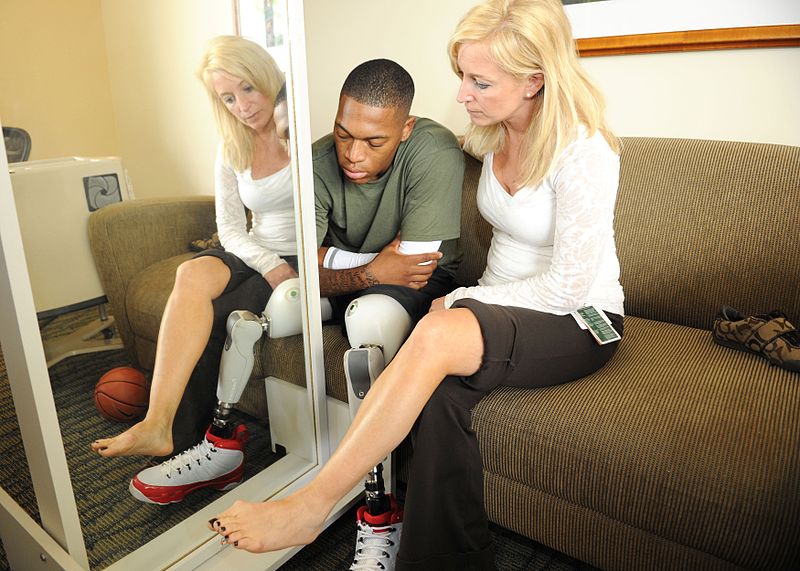
When a limb is paralyzed and then amputated, the patient may perceive a “phantom limb” in its place that is itself paralyzed — the brain has “learned” that the limb is paralyzed and has not received any feedback to the contrary.
University of California neuroscientist V.S. Ramachandran found a simple solution: The patient holds the intact limb next to a mirror, looks at the reflected image, and makes symmetric movements with both the good and the phantom limb. In the reflected image, the brain is now able to “see” the phantom limb moving. The impression of paralysis lifts, and the patient can now move the phantom limb out of painful positions.
A 2018 review called the technique “a valid, simple, and inexpensive treatment for [phantom-limb pain].”
